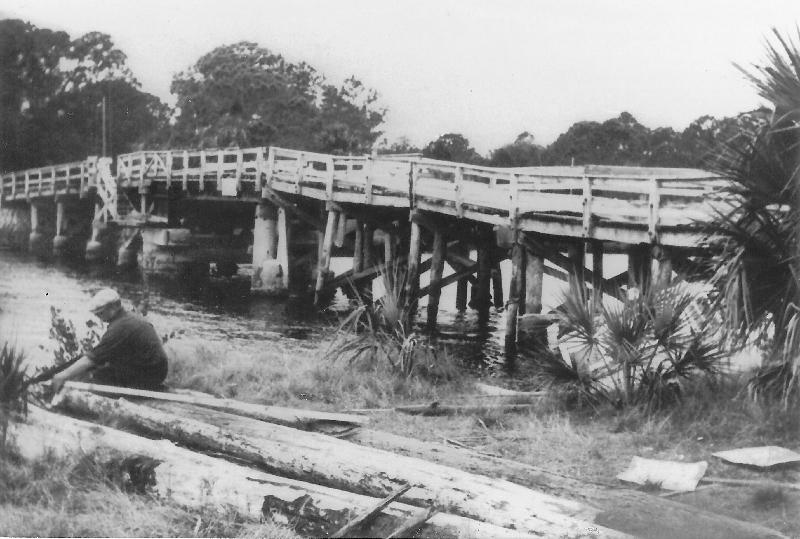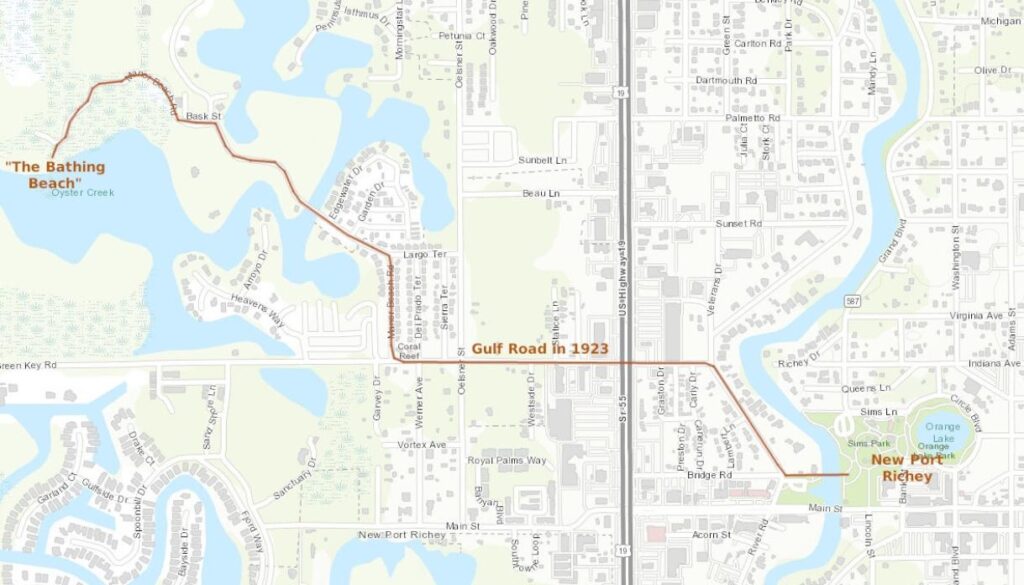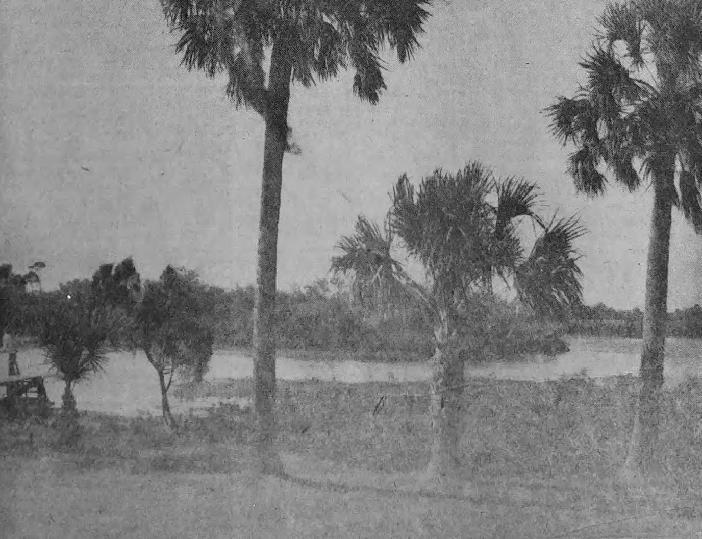Manor Beach
By Paul Herman, Digital Media Archivist, West Pasco Historical Society
(This page is based on an article titled “The First Bathing Beach” published in the Suncoast News on May 1, 2024)
Raise your hand if you think you know the first public beach that was established in west Pasco County. If you think it was Green Key or Hudson Beach, you are off by 40 or 50 years. Hudson Beach (Robert Strickland Memorial Park) was first opened in 1960. And Green Key was privately owned in the early 1900s and did not become a public park (Robert K. Rees Memorial Park) until the early 1970s. The first public beach was much, much earlier.
When the city of New Port Richey was first developed, it quickly became a popular destination for northerners – many of them rich enough to establish a winter home here. But during the warm summer months – before the advent of air conditioning – the permanent residents always enjoyed a way to relax and cool off. Visiting a beach to go “bathing” – what we now refer to as swimming – was a popular pastime.
Unfortunately, there weren’t any public beaches in West Pasco County. So, people traveled to Pinellas County to Clearwater Beach, Crystal Beach, Sunset Beach, Anna Maria Key and Cortez Beach. Considering the poor roads, going “bathing” was definitely an all-day adventure back in the 1920s.
New Port Richey leaders were anxious to do something about the lack of a bathing beach near to town. As early as October of 1919, a letter to the editor of the Port Richey Press said, ” … you should by all means build a road to the Gulf and a bathing beach. This would be a big drawing card.”. In June of 1922, a suggestion was made to build a resort on one of the islands at the mouth of the Cotee River that would include a bathing beach, dance pavilion, and concession area. But the idea languished.

Finally, by the end of 1922, a plan was developed to build a “road to the Gulf” from Enchantment Park (now Sims Park), running northwesterly across Oyster Bayou and ending up at a proposed bathing beach site on the north bank of Oyster Creek facing the Gulf of Mexico. The sandy beach area required the removal of sawgrass along the shore to make it into an attractive public beach with a picnic area. By 1923, a timber piling bridge had been constructed and plans were underway to pave the road along its complete length.

On a current map, the route of the “Gulf Road” was west from the bridge at Enchantment Park (the Main Street Bridge did not yet exist), then north along River Road to what is now Green Key Road, then west to Manor Beach Road, and on to the bathing beach on Oyster Creek. The New Port Richey bathing beach was a popular attraction for many years.
In 1925, the Manor Realty Company subdivided the area in the vicinity of the Bathing Beach – advertising 800 home lots for sale in an area amidst “200 islands” in Manor Beach Estates. Eventually, the name of the beach and its surroundings evolved from “the bathing beach” to “Manor Beach”.
Manor Beach continued to be a popular attraction for local residents into the late 1920s … a place where picnics, parties, and church gatherings were held. Finally, in 1929, George Sims – whose Port Richey Land Company owned the beach property – agreed to donate a 10 acre tract of land where Manor Beach was situated to the City of New Port Richey at the urging of Warren Burns, who was president of the city council. The “New Port Richey Club” – consisting of prominent businessmen and city officials – talked of improving Manor Beach by adding a large swimming pool that would be fed by the clear Gulf waters. An article in the March 15, 1929, edition of the New Port Richey Press quoted club members as saying “the project would benefit the entire city even more than the Orange Lake golf course, which has become the talk of the town and every tourist who sees it”.

The pool at Manor Beach never became a reality. But the beach endured as a popular attraction. The City of New Port Richey continued to maintain and improve the facilities throughout the 1930s – adding covered picnic tables, toilets, and a bathhouse. City councilman Fred Howard (who has a park named after him in Tarpon Springs) spearheaded support for the continued maintenance of Manor Beach.
By 1946, Manor Beach was in need of additional maintenance. The local Chamber of Commerce stepped up under the leadership of E. C. Blum and financed a beach renurishment project, construction of a pavilion in the picnic area, a brick cooking grill, and clearing of the mangroves for a better view of the Gulf of Mexico. The summer of ’46 saw many organizations and citizens join in the effort to improve Manor Beach.
The long and storied history of Manor Beach came to an end in 1958 when the City of New Port Richey agreed to deed the property to private developer Howard Burkland (he also developed Gulf Harbors) in exchange for 30 acres of land on Deer Island – also known as Green Key. The plan was to make Green Key the site of a new municipal beach. More than a decade later, after multiple setbacks and negotiations with Pasco County, that dream finally came true with the opening of Pasco County’s Robert K. Rees Memorial Park.
Today, there is no trace of the original bathing beach known as Manor Beach. That property is privately owned and the beach area has once again been overtaken by nature. The original Manor Creek bridge over Oyster Creek, constructed in 1923, was replaced in 1999 by Pasco County Public Works.
